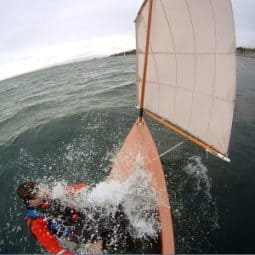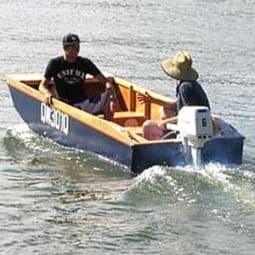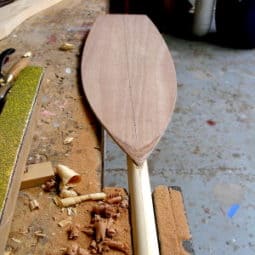Most people know about using Cordless Drills to drive screws into timber now, but I remember when it was new and exciting! Here’s my spiel from my plans sets
Cordless Battery Drill with Clutch.
A marriage made in heaven. Battery Drills (most convenient) with a clutch and variable speed remove the need for dozens of clamps which can be a major cost.
Because Epoxies only need light to moderate clamping pressures this is easily adequate for 100% trustworthy joints
The screws are self tapping and match a Phillip’s head bit in the drill. Just hold two pieces of wood together with one hand and drive screw in with drill in other. Fast and the screws should be removed and may be re used.
If you want to minimize the indentation where the screw head meets the ply, use a plywood pad already placed on screw. If gluing, the pad should have some plastic packaging tape wrapped around it to stop accidental bonding to the workpiece.
I mass produce the pads by cutting a strip of ply (usually 6mm, 1/4″ thick) about 19mm wide (3/4″), covering one side with packaging tape, then cutting it into 19mm (3/4″) squares.
Screws should be removed when the epoxy is hard enough – usually the following day – it should feel hard when you try to indent it with a thumbnail.

If the screws ever get stuck so they can’t be undone apply some heat using a cheap electric soldering iron (right). A couple of minutes and the epoxy will soften enough for them to be unscrewed.
You can also use the driver to run in larger gauge hex headed screws which are excellent for bigger projects and heavier ply (9mm, 3/8″ and up. They often come with a flange complete with a rubber washer.
I got a tip from Chuck at Duckworks. Instead of using a normal cordless drill he uses an impact cordless. He finds that it drives long screws in easily with standard philip’s heads rather than having to move to square drives or other more expensive screws.



















